From]Carcharodon hastalis (Agassiz, 1838) to Carcharodon carcharias (Linnaeus, 1758)
| Morphologically diverse shark tooth fossils of the genus Carcharodon occur from many fossil localities in Japan. In order to interpret these morphologically diverse tooth fossils in a unified manner, fossil teeth collected from three localities in Japan and teeth of extant sharks of the genus Carcharodon were examined. Each tooth morphology were classified according to its height/width ratio only and analyzed. |
|
| The height and width of the shark teeth were maesured and determine the ratio of width to height (Ref.1.). These ratios were classified according to its size and created histograms. The characteristics of the teeth are determined from the mean values and the distribution patterns of ratios. |
| Shark upper teeth used for the measurement |
| 1. Teeth of extant C. carcharias except posterior teeth, n=14 (Ref.2.) 2. Teeth of C. carcharias from the Ichijiku Formation, Pleistocene, n=40 3. Teeth of C. carcharias from the Naarai Formation, Pliocene, n=68 *1 4. Teeth of C. hastalis from the Amatsu Formation, Late Miocene, n=51 |
| *1. These fossils were collected during the year 1999. |
| Fig.1. Histogram of teeth of C. carcharias from the Ichijiku Formation, Pleistocene and the Naarai Formation, Pliocene. |
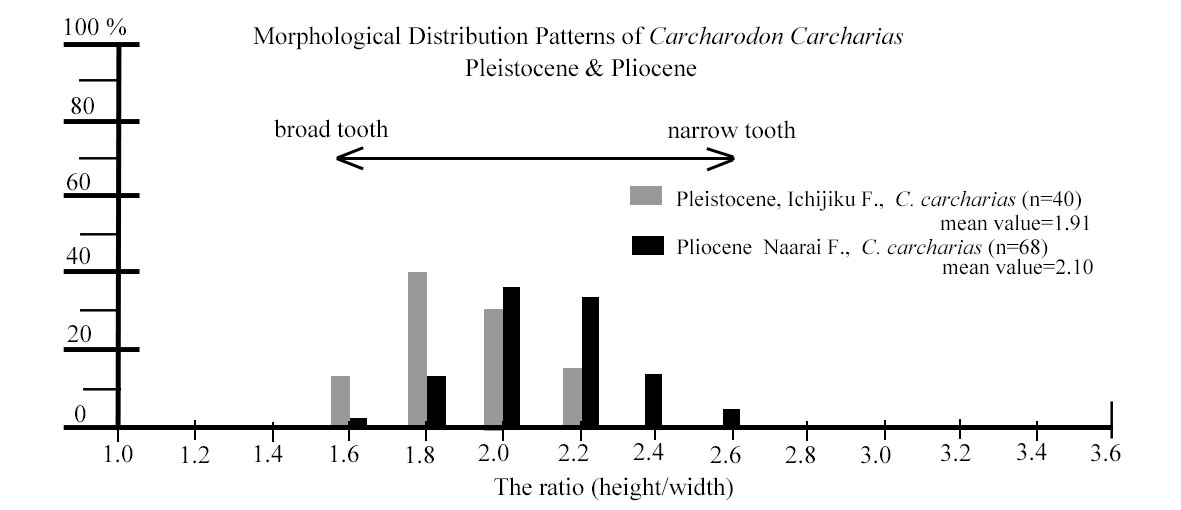
| Fig.2. Histogram of teth of C. carchaodon and C. hastalis from the Senhata Formation, Late Miocene. |
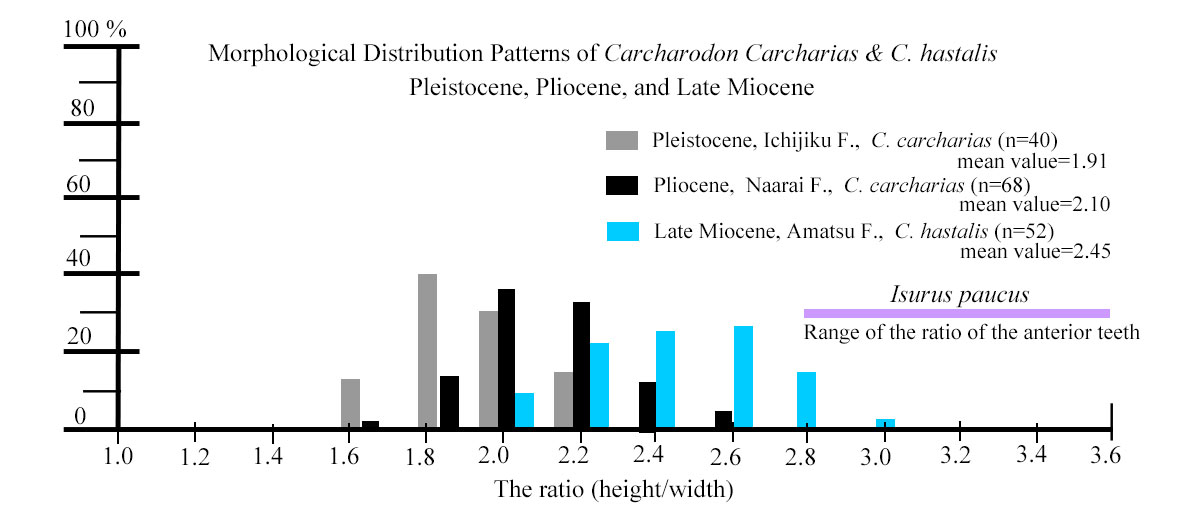
| C. hastalis, Late Miocene, Senhata Conglomerate Member, Amatsu Formation Fig. 2. The histogram showing the distribution of the height-to-width ratio of C. hastalis teeth shows a broad pattern of distribution, with the mean value of the ratio being 2.45. This broad distribution indicates that the teeth of C. hastalis range from narrow, like those of Isurus paucus, to wide, like those of the present-day great white sharks. Judging from this distribution pattern, there is only one species of C. hastalis. It is unreasonable to conclude that it can be separated into two or more species. |
| C. carcharias, Pliocene, Naarai Formation Fig.2. C. hastalis, which was abundant in the Miocene, was rarely found in the Pliocene and has evolved into C. carcharias. The histogram of the teeth of C.carcharias is very similar to the distribution of C. hastalis in the late Miocene, showing a broad distribution pattern. However, the mean ratio of height to width is 2.10, indicating an overall shift toward wider teeth. This histogram of Pliocene C. carcharias teeth also indicates the presence of only one species of C. carcharias, as is the case for the Miocene C. hastalis. |
| C. carcharias, Pleistocene, Ichijiku Formation Fig.2. The teeth of C. carcharias are broader in this period than in the Pliocene, with an average value of 1.91, and fewer narrow teeth. |
| Ref. 1. the measurement of tooth |
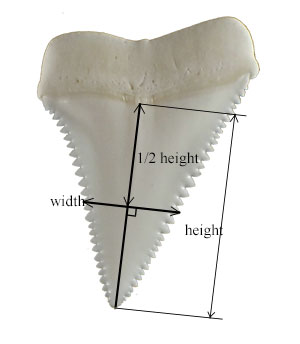
| Ref. 2. |
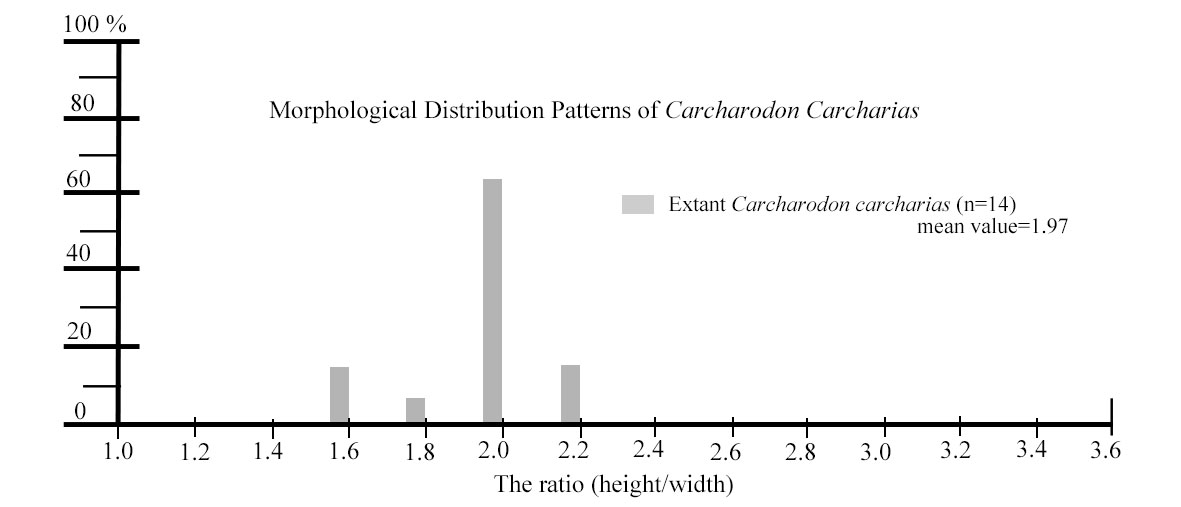
| Ref. 3. Formations |
| Ichijiku Formation: lower Chibanian, 0.78-0.60 Ma Nakayama, N. and Masuda, F. (1987) Ocean current-controlled sedimentary facies of the Pleistocene Ichijiku Formation, Kazusa Group, Boso Peninsula. Jour. Geol. Soc. Japan, 93(11), p.833-845. Nakajima, T. and Watanabe, M. (2005) Geology of the Futtsu District. Quadrangle Series, 1:50,000. Geological Survey of Japan, AIST, 102 pp. |
| The basal conglomerates of "Naarai” Formation: uppermost Messinian
to lower Zanclean, 5.51-4.36 Ma Matoba, Y. (1967) Younger Cenozoic foraminiferal assemblages from the Choshi District, Chiba Prefecture. Sci. Rep. Tohoku Univ., 2nd ser. (Geol.), 3(82), p. 221-263. Wade, B.S., Pearson, P.N., Berggren, W.A. and Pälike, H. (2011) Review and revision of Cenozoic tropical planktonic foraminiferal biostratigraphy and calibration to the geomagnetic polarity and astronomical time scale. Earth-Science Reviews, 104, p. 111-142. |
| Senhata Conglomerate Member, Amatsu Formation: lower Messinian, 7.10 -
6.71 Ma Sawada, T., Shindo, R., Motoyama, I. and Kameo, K. (2009) Geology and radiolarian biostratigraphy of the Miocene and Pliocene Series exposed along the Koitogawa River, Boso Peninsula, Japan. Jour. Geol. Soc. Japan, 115(5), p. 206-222. Kameo, K., Mita, I. and Fujioka, M. (2002) Calcareous nannofossil biostratigraphy of the Amatsu Formation (Middle Miocene to Lower Pliocene), Awa Group, distributed in the central part of the Boso Peninsula, central Japan. Jour. Geol. Soc. Japan, 108(12), p. 813-828. |
| Ref. 4. Shark teeth used for the measurement |
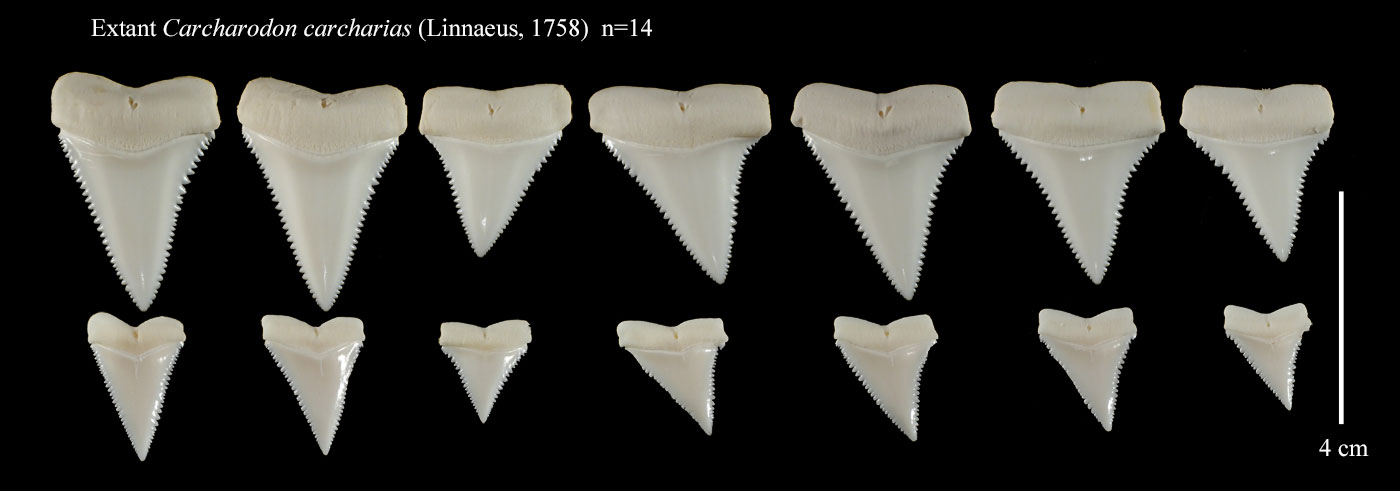
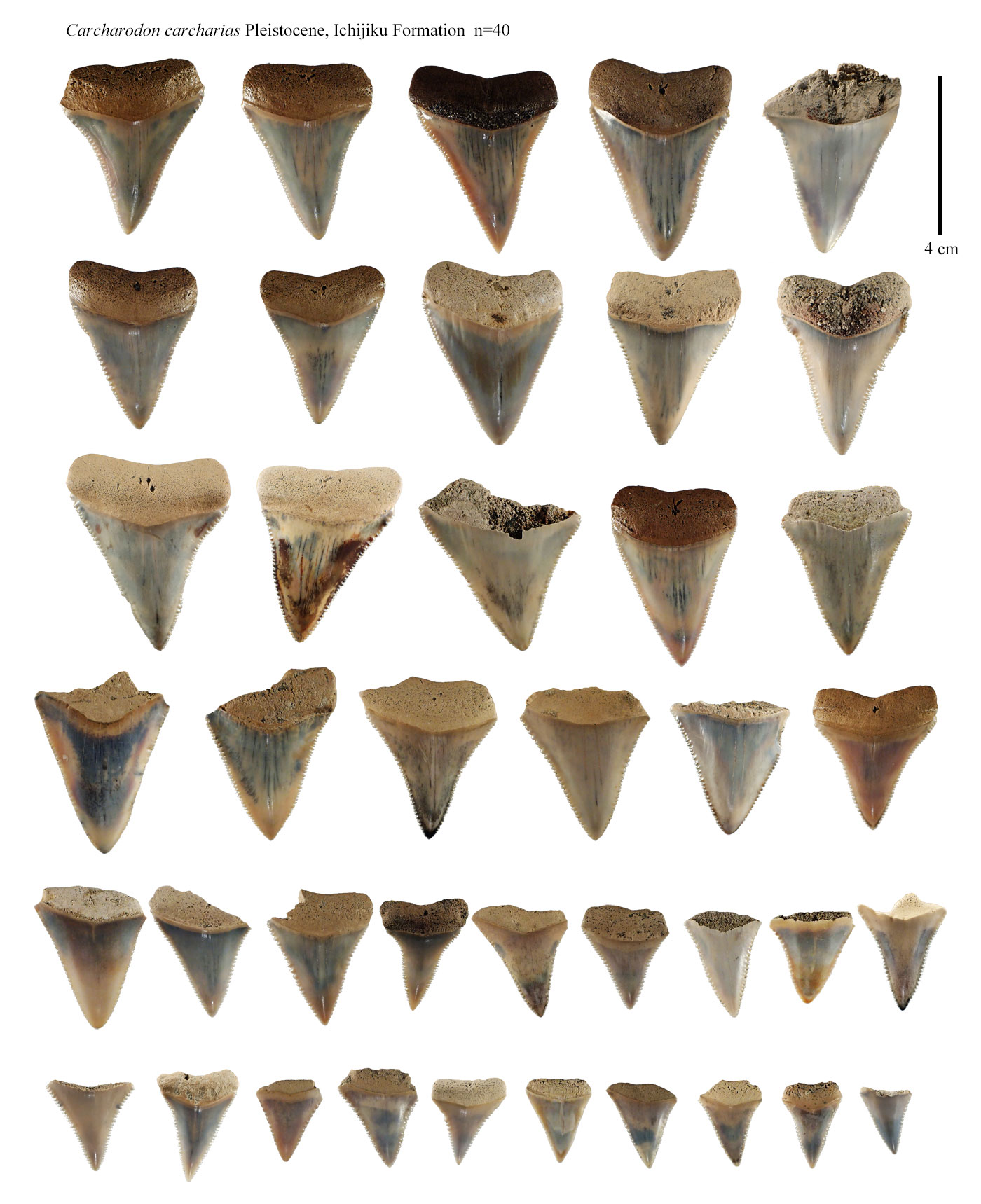
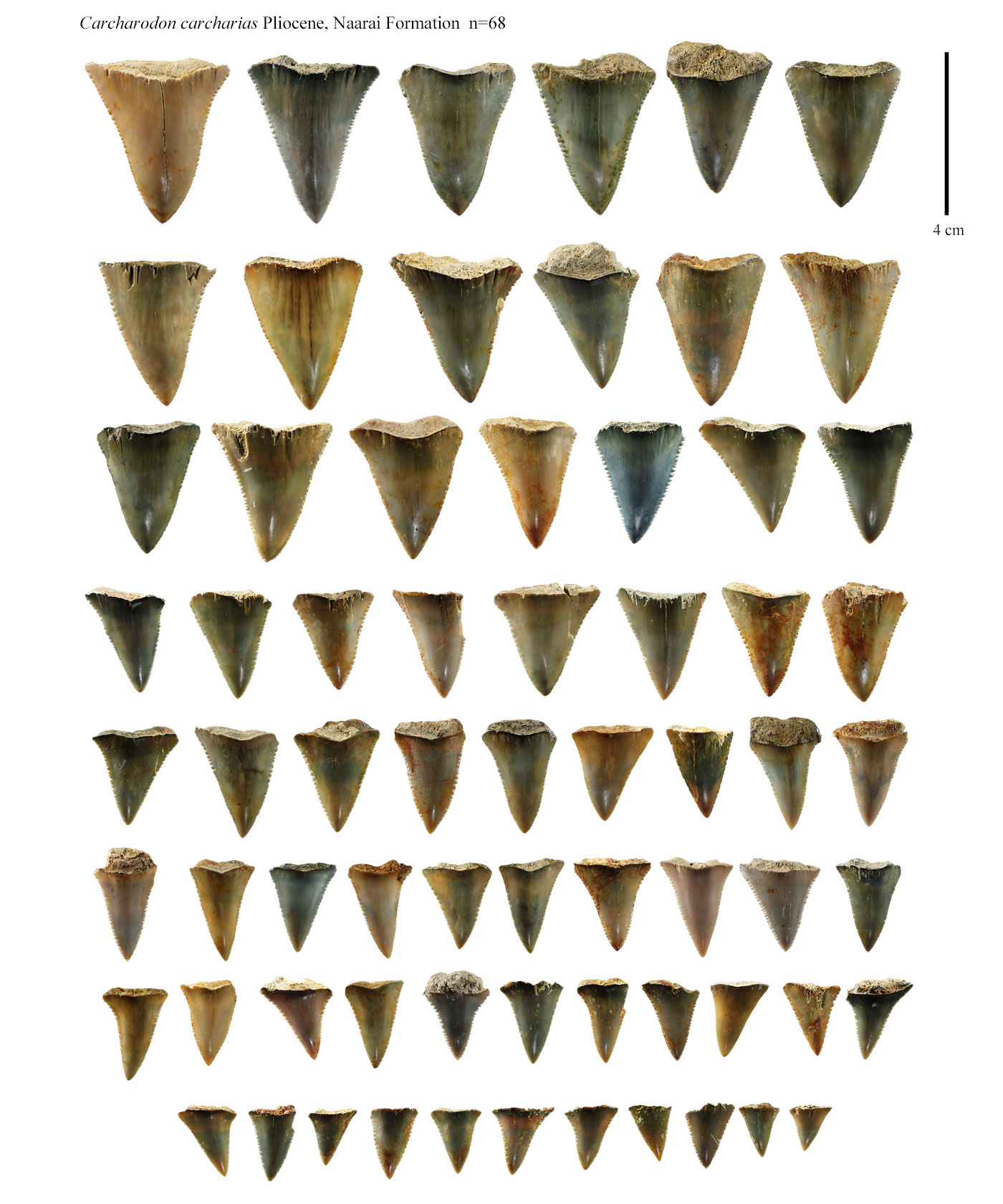
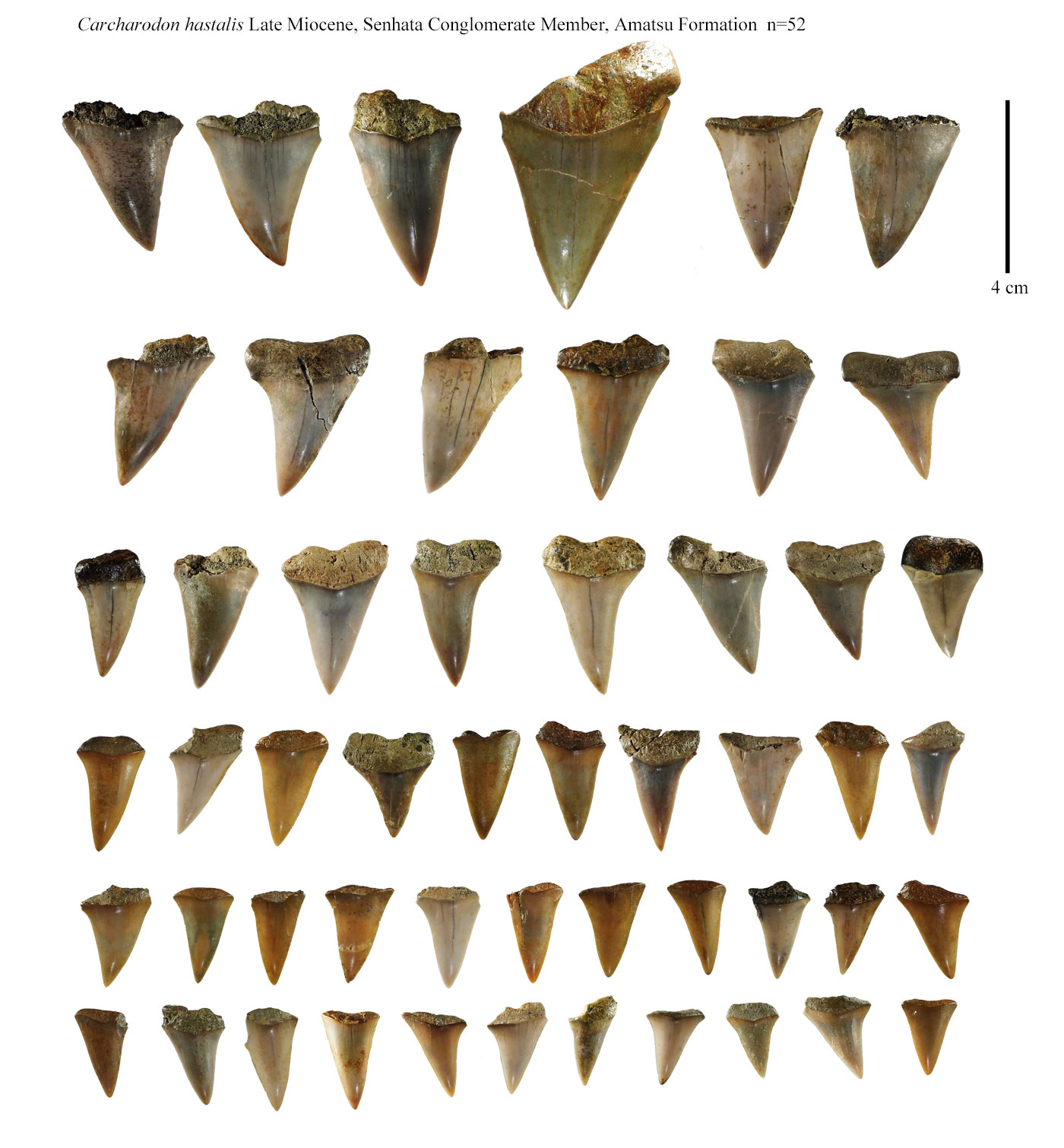
ver.2: Aug.06, 2023/ ver. 1: Jul. 18, 2023
h